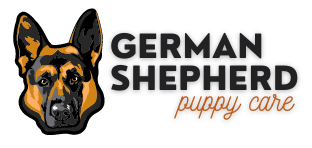German Shepherd Dog Adoption Process & Checklist
I. Introduction
Getting a dog can be a time-consuming process When you come to the shelter, it’s not surprising to find that the pet you’ve been looking at online has already been adopted. But don’t lose heart. You can locate the ideal dog for you out there, and our guide will assist you.
Adopting dogs rather than buying them is becoming increasingly popular in the huge world of pet ownership. This not only helps with the problem of stray and abandoned animals, but it also gives dogs in need loving homes. In this guide, we’ll look at the dog adoption procedure in the USA in 2025, providing information on the procedures and advice for a smooth adoption process. Continue reading to learn how to adopt a dog.

II. Preparing for Adoption
It’s important to analyze your lifestyle, investigate various breeds, and prepare a budget for any possible costs before starting the dog adoption process. Knowing when you’re ready to become a pet owner sets the foundation for a happy and satisfying relationship with your future animal friend.
The Animal Care Centers in your closest location (ACC) are where you can adopt a dog. Staten Island, Brooklyn, and Manhattan are the locations of the Care Centers. Weekly off-site adoption events are also organized by ACC.
Adopting an animal requires you to:
a) Be at least 18 years old.
b) Have a picture ID
c) Present documentation attesting to your present address.
d) If you rent your home or apartment, provide documentation that you are authorized to have pets there.
The ACC counselors will assist you in selecting the animal that best fits your way of life.
e) Your children must visit the Care Center and participate in the adoption procedure if they currently reside in your household.
Every animal is adopted based on priority. It also depends on your unique set of qualifications.
The cost of adopting an animal is determined by a sliding scale that runs from $25 to $400.
Choosing the right shelter is a pivotal step in the adoption process. Whether opting for a local shelter or a breed-specific rescue, visiting these facilities allows prospective pet parents to connect with potential furry companions and evaluate compatibility.
Checking out aggregated websites. Many shelters will post dogs up for adoption both on their websites and places like Petfinder or Adopt A Pet.
III. Finding the Right Shelter
Selecting a suitable shelter is an essential step in the adoption process. Whether choosing a breed-specific rescue or a nearby shelter, visiting these places enables hopeful pet parents to meet and assess compatibility with possible furry friends. looking through compiled web pages. Dogs for adoption can be found on the websites of many shelters as well as on sites like
Search for Banned Breeds near you
Although there aren’t any breed-specific bans in the city, owners of Doberman pinschers, pit bulls, and Rottweilers aren’t allowed to have them in their homes if they live in buildings owned by the NYC Housing Authority. This covers combinations or reduced versions of any of the previously mentioned. It is additionally unlawful for people of NYCHA to own dogs that weigh more than 25 pounds, regardless of breed. Visit the closest animal center to determine what’s available in your area.
IV. Adoption Application Process
The next step is to follow the adoption application procedure when you’ve identified your perfect match. This involves filling out the required paperwork, going on house visits, and taking part in interviews to make sure the adopted dog has a proper place to live.
V. Bringing Your New Dog Home
A smooth adjustment depends on getting your house ready for the new addition. These first experiences are vital for building comfort and trust, whether you do it by making your home dog-friendly or by welcoming your pet with open arms.
Depending on the agency you work with, the adoption procedure may take a few hours or several weeks. Before you visit with an adoption counselor, collect as much information as you can to increase your chances of success.
What should be on your pet homecoming checklist is:
a) Food and food bowls
b) A collar, harness, and leash—or both!
c) Toys, particularly ones that excite your new pet’s mind
d) Sweets to promote friendship and celebrate excellent behavior
e) Accident-related enzyme cleanser
f) A suitable-sized cage to function as a recognized shelter for your dog as they adapt to their new home.
g) You may also require brushes, shampoo, nail trimmers, and other grooming supplies, depending on the breed.
h) Make sure your house is pet-proof. To prevent your dog from being attracted to chew on electrical cables, keep dangerous objects and meals well out of reach.

VI. Post-Adoption Care
Make sure your adopted dog is healthy after the first time they are brought home. Establishing a strong and long relationship with your animal friend is made easier by regular veterinarian attention, efficient training methods, and socialization efforts.
VII. Common Challenges and Solutions
Every adoption journey has its own unique set of difficulties. A successful adoption experience depends on recognizing and resolving these obstacles—which can range from behavioral problems to health issues—with perseverance and commitment.
VIII. Community Resources
In every adoption process, communities are a vital source of support for dog owners. Pet owners can get helpful support and direction from these tools, whether they want to use them through training programs, internet networks, or local support groups.
Find the Ideal Time to Adopt Your Pet
For many reasons, the summer and fall are among the greatest seasons to adopt:
Due to increased activity, there is a greater chance that people will come across stray dogs and bring them to a shelter. Because of this, many pet rescues deal with severe or ongoing overpopulation and occasionally have adoption drives at cheaper rates to free up space.
Adopt a Shelter Dog Month is observed in October, during which shelters hold adoption-related activities.
Let’s now discuss getting a pet. Due to the large number of stray animals, adopting an animal rather than buying one from a breeder is both more affordable and caring.
Looking for a specific breed.
A detailed description of dog breeds and their typical traits, including how well they might adapt to city life, may be found at the American Kennel Club. Some larger breeds that one would imagine would require an open yard, like Great Danes, are giant couch potatoes who are perfectly fine sleeping all day. You might be shocked by what you find. You can search for the ideal pet on the AKC website by selecting from a variety of qualities.
Go to search to view available pets so you know what to look for when you get there. You will work together with an adoption advisor to find the right pet.
Vaccination
For both dogs and cats, the rabies vaccines must be finished at least 28 days before to travel to the United States. Whether you enter the United States from a nation the CDC considers to be at high risk of getting rabies will determine if additional regulations apply.
Preparing to bring your new pet home
a) Making a budget for care
b) Although owning a dog is worth the investment, it’s wise to plan. One of the first things you should consider is if you can afford to provide your pet with the life it deserves.
Here’s a list of annual purchases that are typical for a Per Parent:
Food
Waste bags
Pet insurance
Annual veterinary exams
Vaccinations
Dental care (both professional cleanings and products for at-home use)
Treats and toys
Random vet appointments
Transportation and hotel
Dog walking services
Additionally, you’ll need to buy a few items one-time (or replace them as they wear out), like:
Crate
Bedding
Collars, leashes, and harnesses (one or more may be provided by the shelter)
Pet-friendly cleaning products
Grooming products
Training sessions
By ignoring certain unneeded purchases, shopping for some items, or taking advantage of sales, you may be able to save money. For instance, check to see if your veterinarian is offering any dental specials in February.
October is National Pet Dental Month.
Need to Know about Pet Insurance
It is completely up to you whether or not to buy pet insurance. Although it is an additional monthly cost, it can help you manage problems related to your breed or genetic makeup, or it can give you peace of mind in the event of an accident. To decide whether monthly insurance rates are useful, obtain from the adoption agency as much medical history as possible about your dog.
Pet insurance is offered as an elective in certain companies’ benefit packages. Speak with your HR representative or supervisor to learn about all of your choices.
In a Nutshell:
The procedure changes according to the shelter you choose. The most basic requirement of adopting a dog is:
A visit to the shelter to meet your new pet. Bring your family, roommates, and other pets who will be sharing your new home with you.
A call or drop-in with your landlord and veterinarian.
A consultation with an advisor to ensure that you are prepared to own a pet.
Payment and paper signature (more on that later).
You’re then prepared to leave for home! Adoptions that happen on the same day may take an hour or longer, and many agencies end adoptions about an hour before they close.
In terms of accuracy, however, the case mentioned above is on the shorter end. Policies from other organizations may cause the procedure to take several days or weeks. These include:
Thorough inspection of your future dog’s sleeping, eating, and playing areas at home. During home visits, the adoption agency can also verify that all household members are comfortable with having a new pet.
Travel duration if you adopt via an international rescue.
FAQs
How much time does it often take to adopt a dog?
It can take a few days to several weeks, depending on several things including paperwork, interviews, and house visits. The duration varies.
What factors should I take into account while selecting a dog breed to adopt?
Think about your living situation, degree of exercise, and way of life. Look into breeds to select one that matches your needs and tastes.
Exist programs that provide help for expenses related to pets after adoption?
Several groups provide low-cost services or financial support for adopted animals. Consult the veterinary offices and shelters in your area.
What can I do to assist my newly bought dog in its new house?
Provide a safe and cozy environment, slowly adjust your dog to its surroundings, and set up a feeding, walking, and playing schedule.
Can I adopt a specific breed from a rescue group?
Indeed, a lot of rescue groups focus on particular breeds. To find the ideal fit, do some research and get in touch with breed-specific rescues.


